Everything Dies: 8 Graveyards For Anything But Humans

Visit here on Obscura Day! (Photo: Jen Lukehart)
Spoiler alert: we’re all going to die. But we need not despair, because we’re not alone! In fact everything dies in its time. As the universe slips elegantly and inexorably towards entropy, even our goods and possessions become distressingly irrelevant and riddled with decay, experiencing a sort of life cycle of their own. And just like with living beings, inanimate objects have graveyards all their own. All across the world, planes, trains, automobiles, phones, and even spaceships have been discarded in less than sentimental makeshift cemeteries. There may not be any epitaphs or flowers, but these eight material graveyards are no less beautiful than any human boneyard.
1. GREAT TRAIN GRAVEYARD
Uyuni, Bolivia
 The Great Train Grave-Robbery. (Photo: SkareMedia)
The Great Train Grave-Robbery. (Photo: SkareMedia)
Sitting out on the world’s largest salt plain, is the final resting place of a number of 20th century locomotive that are slowly falling apart in the salty wind. Left to die in the barren Bolivian salt wastes by their former British owners who created the tracks that run through the area, the trains now serve a more beneficial function than when they were in operation. The rusting hulks are now one of the leading tourist attractions in the area, drawing much needed travel dollars to the area. The old trains have long since been stripped and vandalized, but these remain some beautiful corpses.
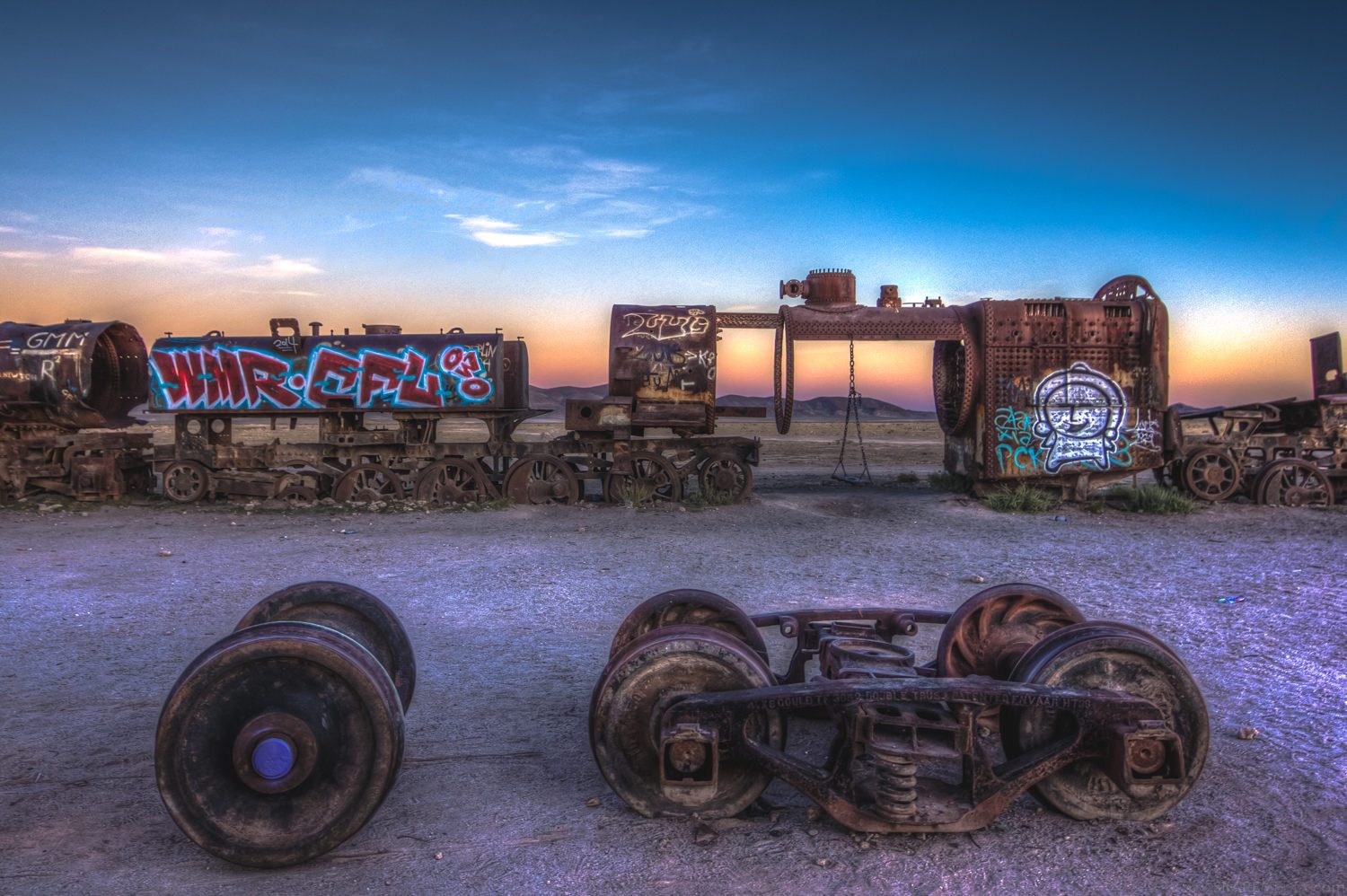
These trains never looked this good in life. (Photo: SkareMedia)
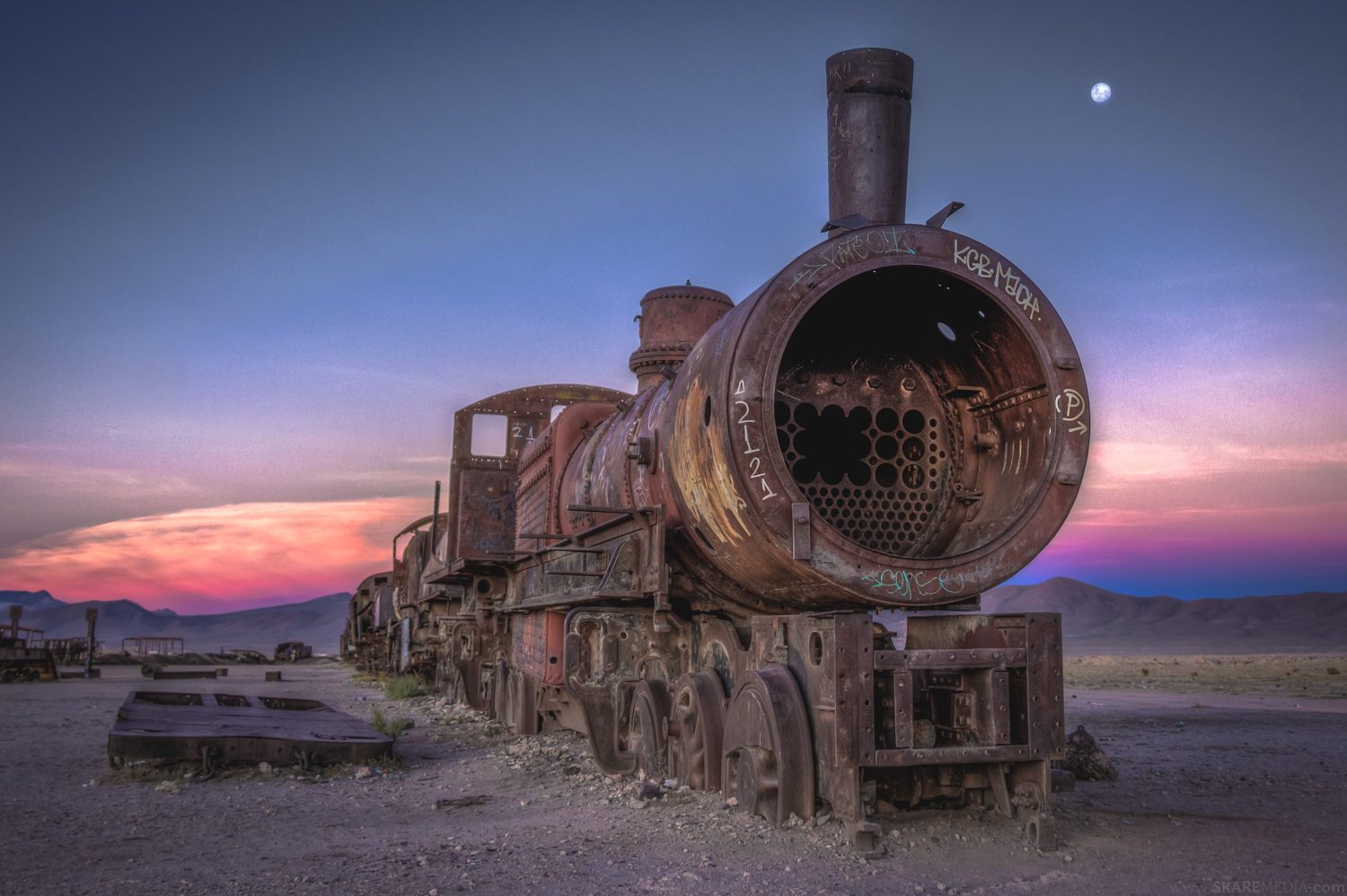
That sunset is being a bit showy. (Photo: SkareMedia)
2. BAY OF NOUADHIBOU SHIP GRAVEYARD
Nouadhibou, Mauritania
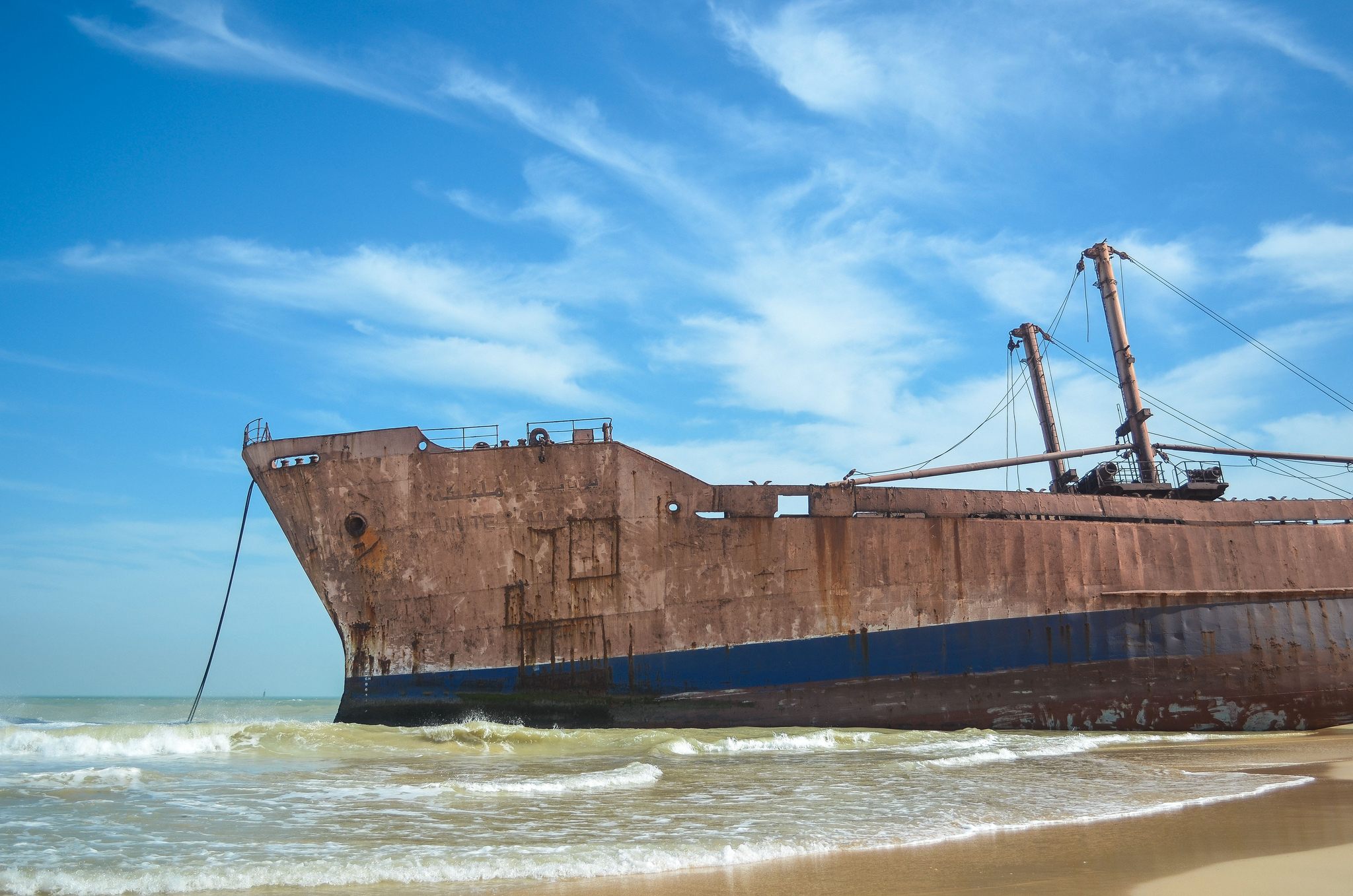
Ghost ship. (Photo: jbdodane on Flickr)
Sitting off the coast of Mauritania’s Bay of Nouadhibou are an army of deteriorating ships that were simply abandoned because it was cheaper than taking them apart. Generally when ships are put out to pasture, they are broken down so they don’t contaminated the waters as they decay. However this process isn’t cheap and in Nouadhibou, the lax governmental controls on the procedure led to a number of cheapskate owners of these vessels simply sail them into the bay and walk away. However this corruption has resulted in a beautiful breakwater made of dead boats. while there has been some negative environmental impact, some of the ships have also become home to a variety of species of fish. As always death fuels life.

Ships. Wrecked. (Photo: Sebastián Losada on Wikimedia Commons)
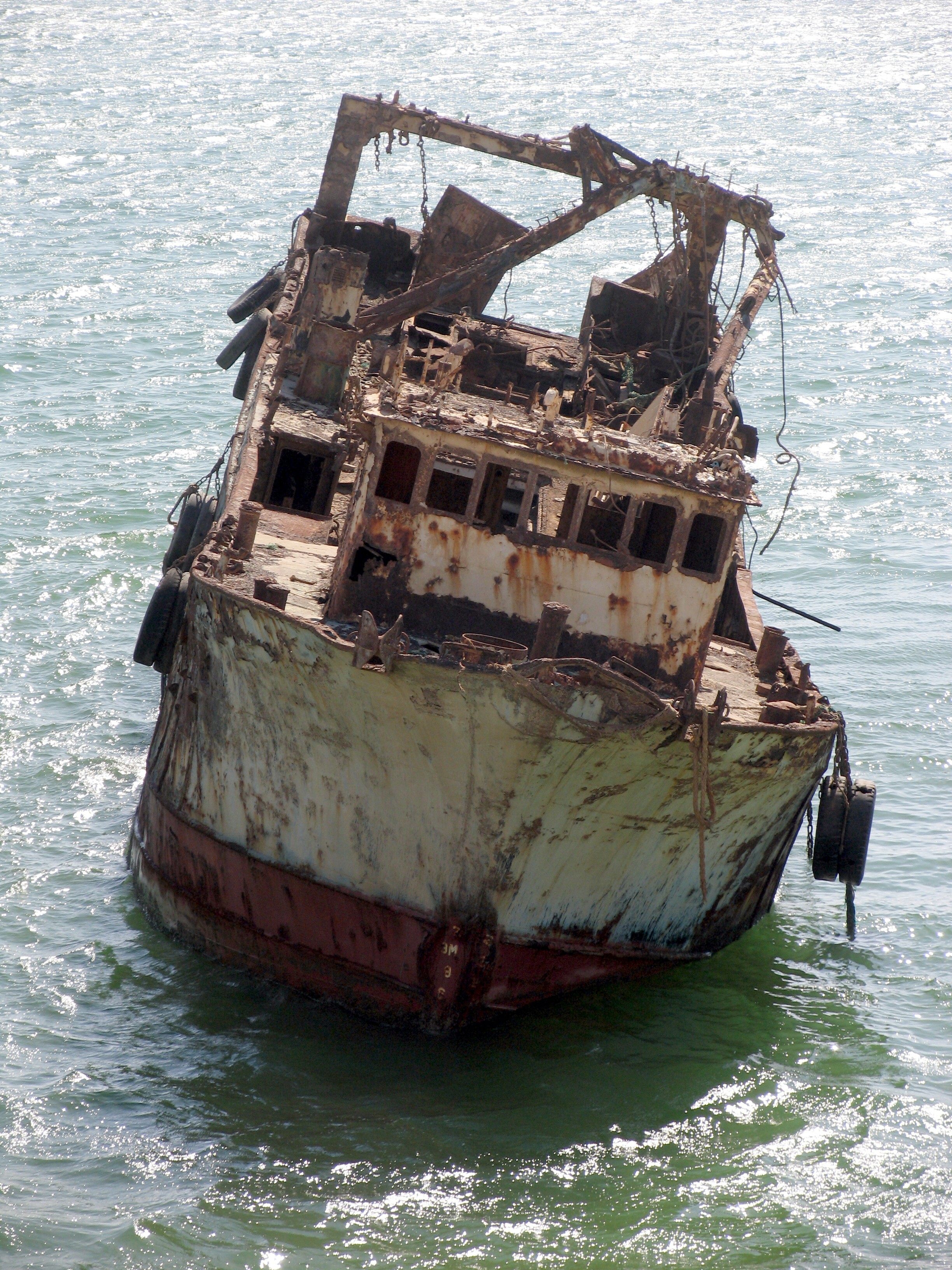
Go home, boat. You’re drunk. (Photo: Sebastián Losada on Flickr)
3. FAST FIBERGLASS MOLD GRAVEYARD
Sparta, Wisconsin
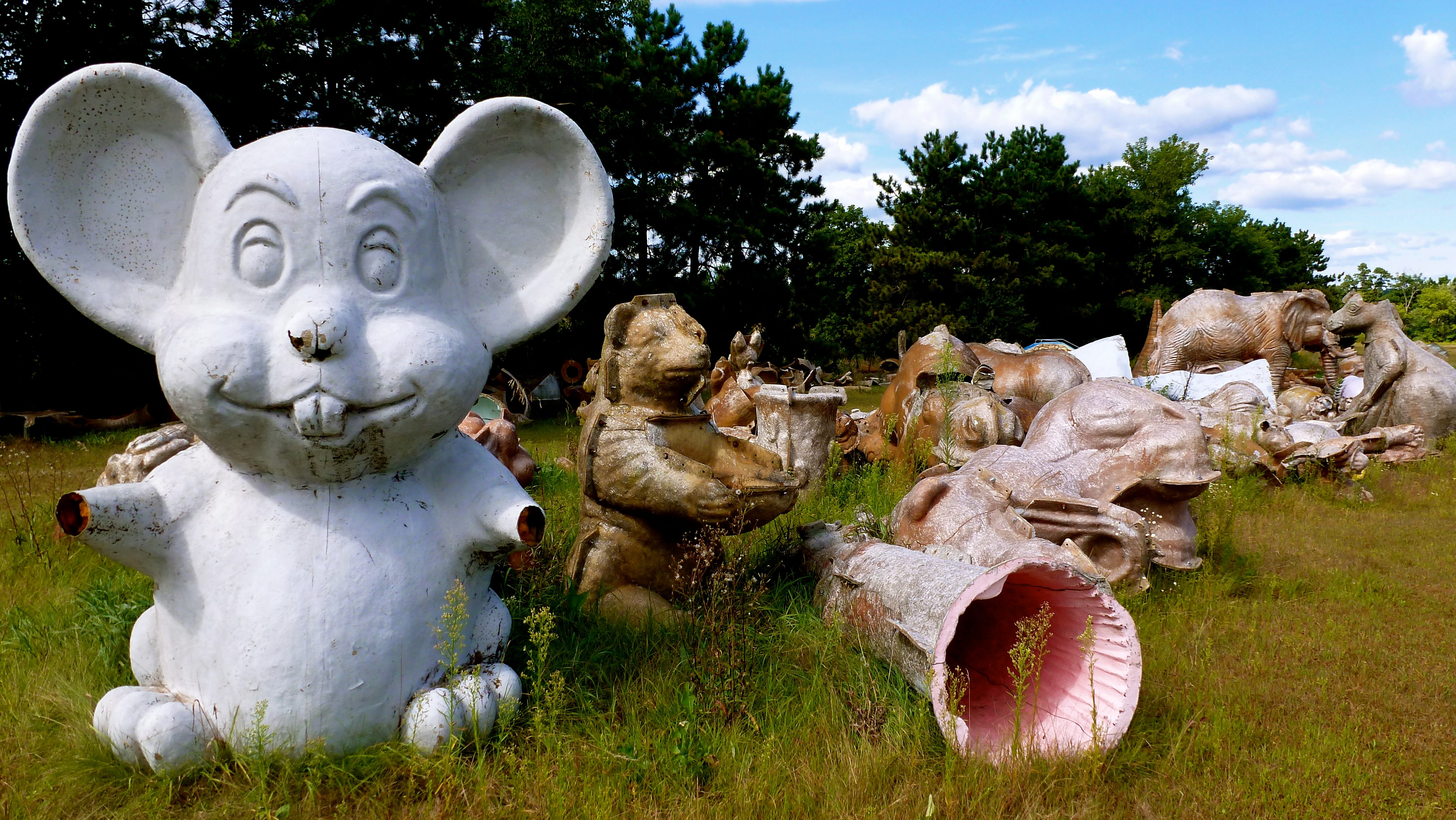
That mouse will eat your dreams. (Photo: Jen Lukehart)
The Fiberglass Animals, Shapes, and Trademarks (FAST) company has been making decorative figures and mascots for years. As a part of the process, a mold is created that essentially looks like a creepier version of the final product. Not wanting to waste a form that could be reused in the future, the company simply deposits old molds in the field behind their factory. As they have accumulated over the years, this fiberglass graveyard has become home to a wild menagerie of lifeless beasts ranging from sharks to mice to dragons, all looking not unlike oddly shaped headstones. However the dead here are not buried, they are just sitting out on the surface.

It’s like if Medusa was really into roadside attractions. (Photo: Jen Lukehart)
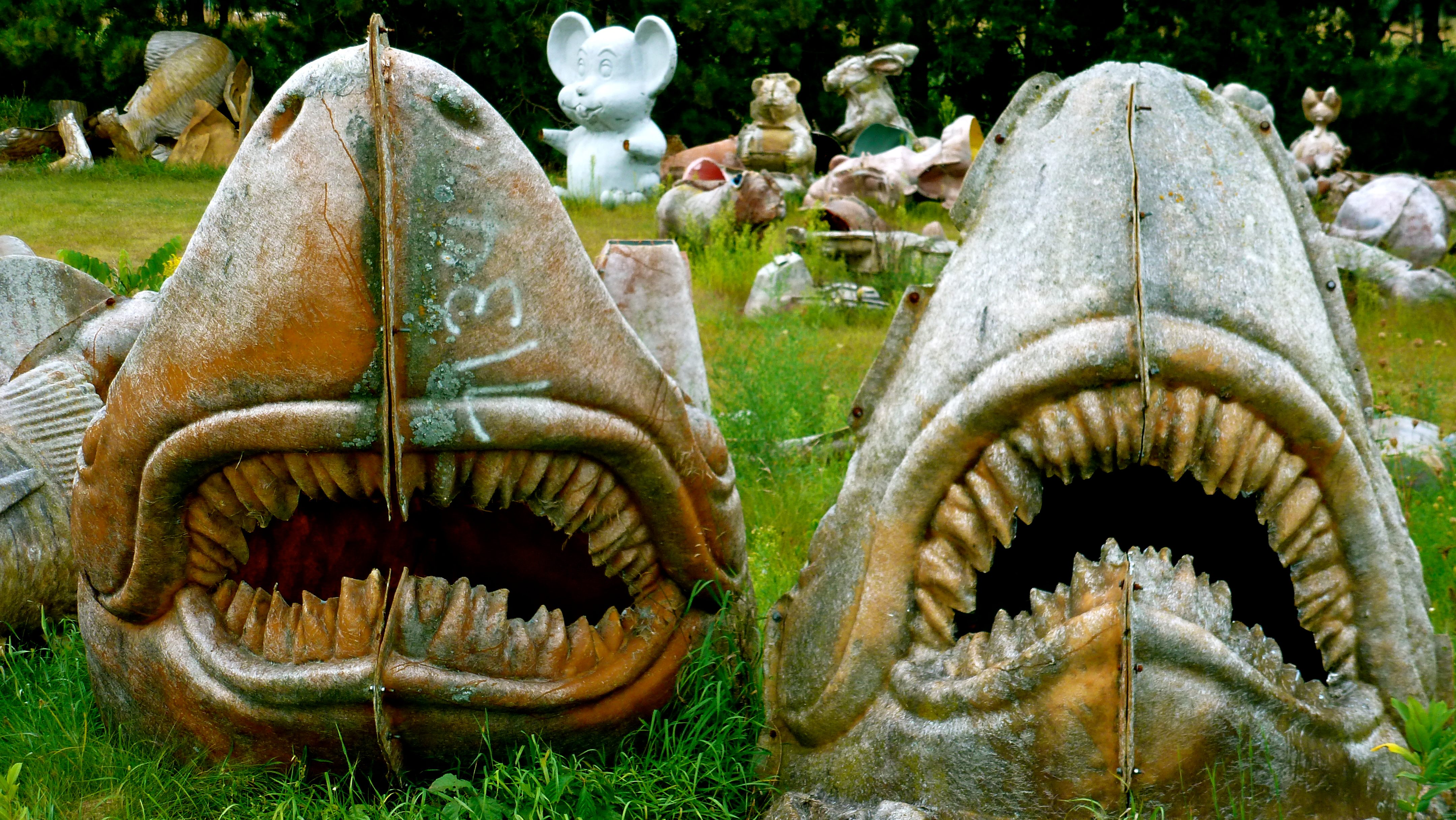
The plural is “Jaws” is just “Jaws” (Photo: Jen Lukehart)
4. BÅSTNÄS CAR CEMETERY
Varmland, Sweden
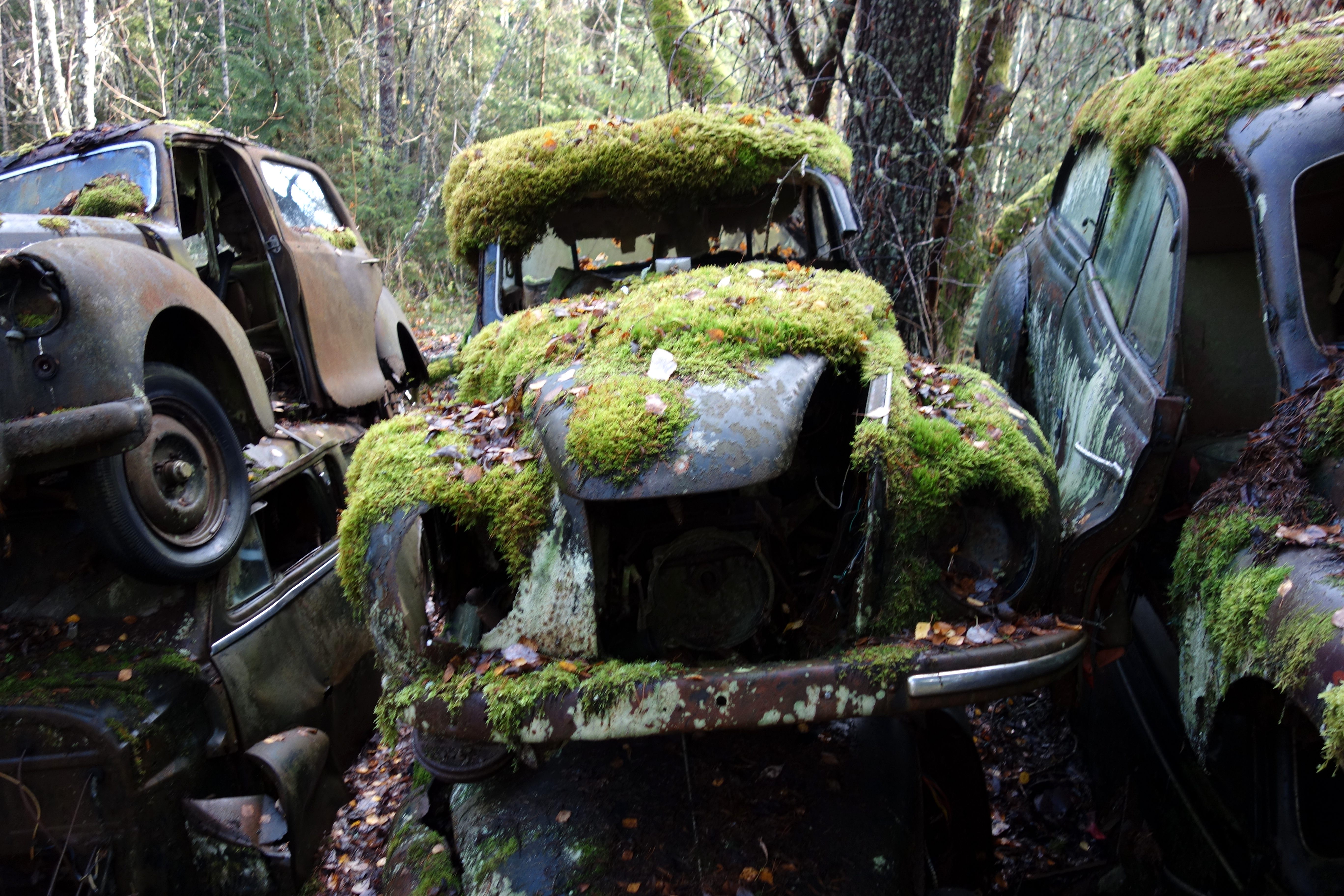
Yer cars covered in moss. There’s yer problem. (Photo: hrnick)
This secluded car graveyard is home to countless, scenically overgrown wrecks, but woe be it to anyone who thinks of stealing from the rusting collection of automobiles. Slowly assembled by a pair of reclusive brothers living on the Swedish/Norwegian border, many of the cars that can be found throughout the woods and out front of their house are said to have been left in the country after World War II. Photographers are a regular site in the graveyards, and the brothers don’t seem to mind, but they have posted this warning,
This car cemetery is private property. You may still look, take pictures but DO NOT take away parts. Do not destroy or in any other way disrupt this place. If you open a car door, please shut it again so the next visitor get the same experience as you did!! For info: after about 30 burglaries this year I’m fed up with it! I’ve made traps in the buildings so if you get hurt or die, I DON’T CARE! Remember in this place no one can hear you scream…
Pretty harsh for a graveyard.
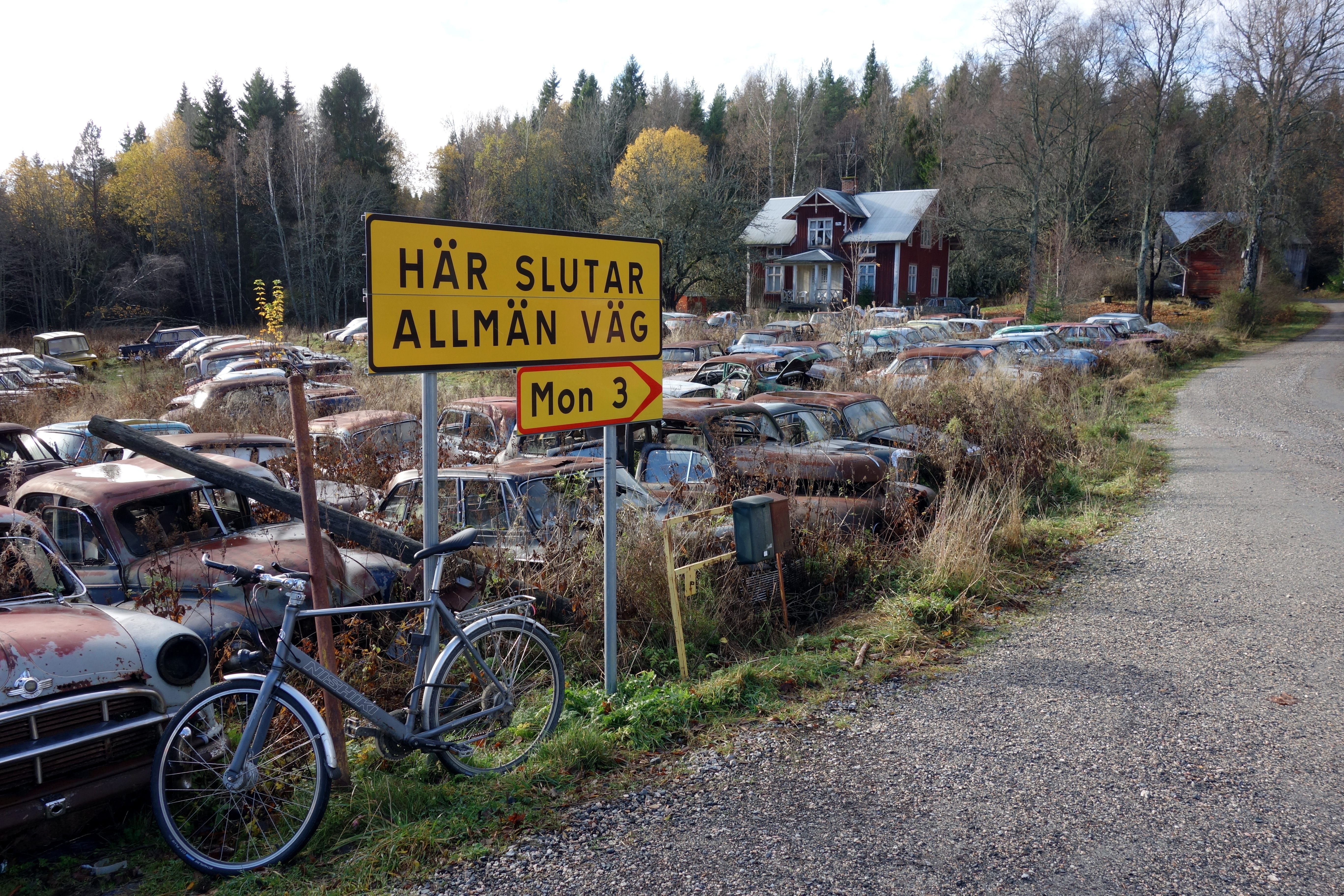
I’m not sure what that sign translates to, but I’m going with “Nothing Creepy Here.” (Photo: hrnick)
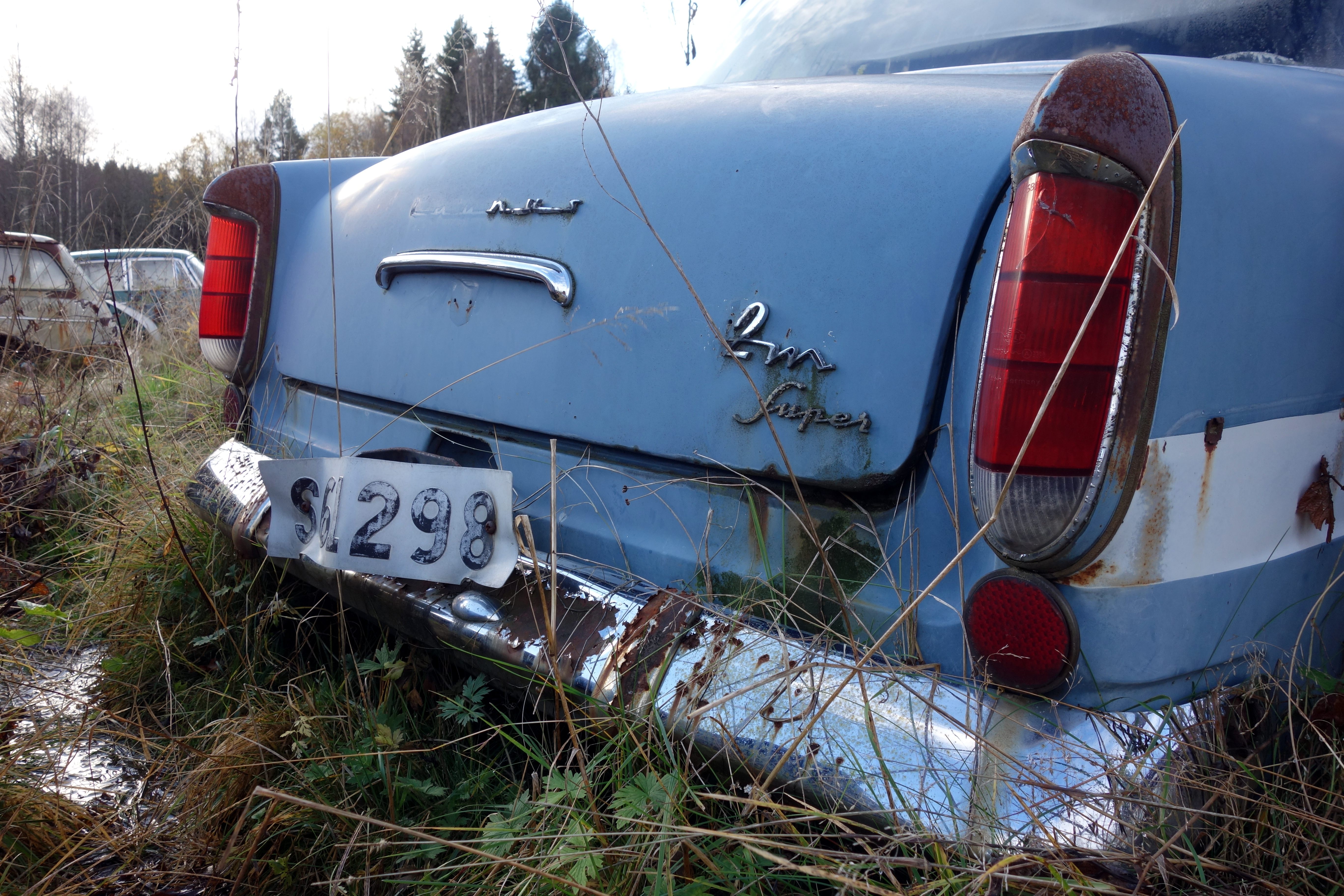
This trunk IS junk. (Photo: hrnick)
5. RED TELEPHONE BOX GRAVEYARD
Carlton Minniot, United Kingdom
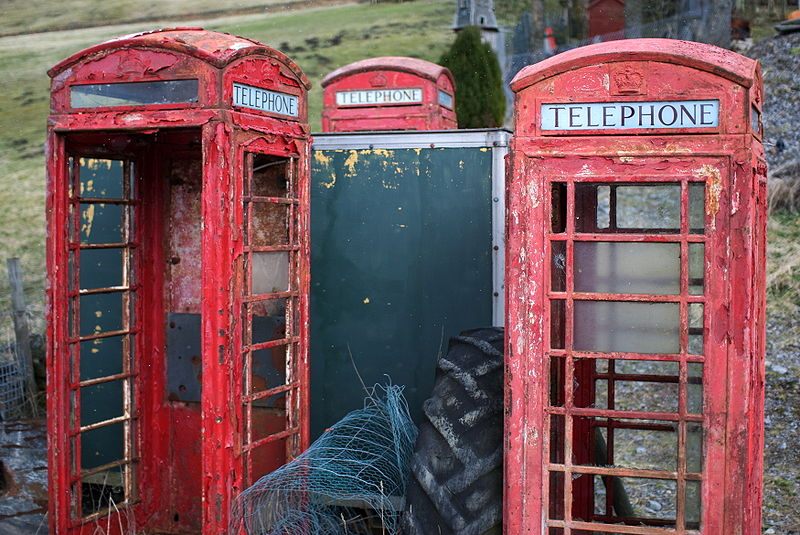
Can dead phone boxes talk to ghosts? (Photo: Andy Armstrong on Wikipedia)
Once a ubiquitous icon of the English Empire, the red telephone box has faded from its once glorious notoriety, and many of the old booths have been abandoned hundreds of scrapyards and storage sites. One of these dumping grounds can be found in the northern England village of Carlton Miniott. Here, hundreds of the crimson icons can be found, paint chipping, and metal rusting. They are stood in rows and piled on top of one another like a big, red, mass grave. This telephony cemetery can be seen as graveyard not only for these obsolete bits of technology, but for a bygone era of English history as well.

Phone with no home. (Photo: Les Chatfield on Wikipedia)
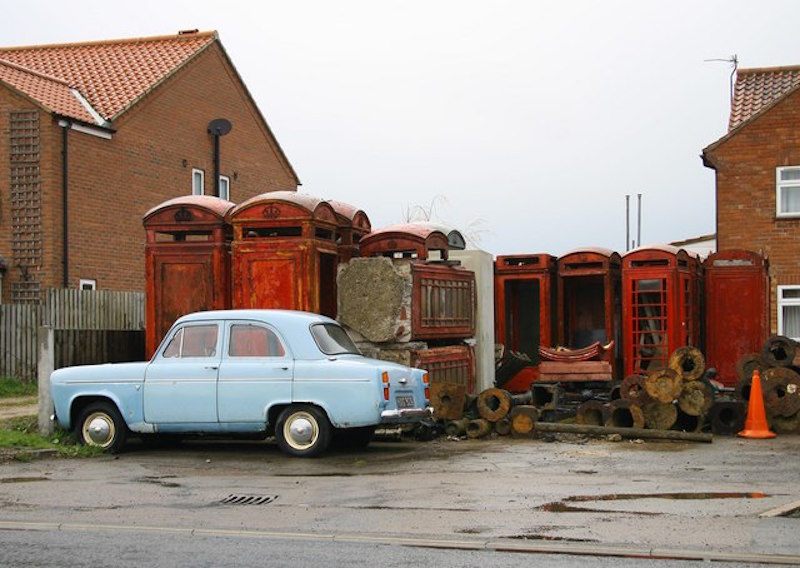
A mass telephone grave. (Photo: David Rogers on Wikipedia)
6. 309TH AEROSPACE MAINTENANCE AND REGENERATION GROUP
Tucson, Arizona

Now, where did we park? (Photo: Niteowlneils on Wikipedia)
Known rather tellingly as “The Boneyard,” the 309th Aerospace Maintenance and Regeneration Group on the Davis-Montham Air Force Base in Tuscon, Arizona is home to thousands of decommissioned aircraft, lined up in neat rows just like a military cemetery. The massive field of dead birds contains almost every type of American aircraft ever flown after World War II. From B-52 bombers to 707 passenger planes, the graveyard is an eclectic collection of airplanes that one could quite literally get lost in. Not to sound ghoulish, but many of the planes are harvested for parts to repair military craft that are still in use. This field of the dead is as much a chronicle of 20th century flight as any museum.

When you’re a jet, you’re a jet til your last dying day. (Photo: Tungsten on Wikipedia)
7. NEON BONEYARD
Las Vegas, Nevada
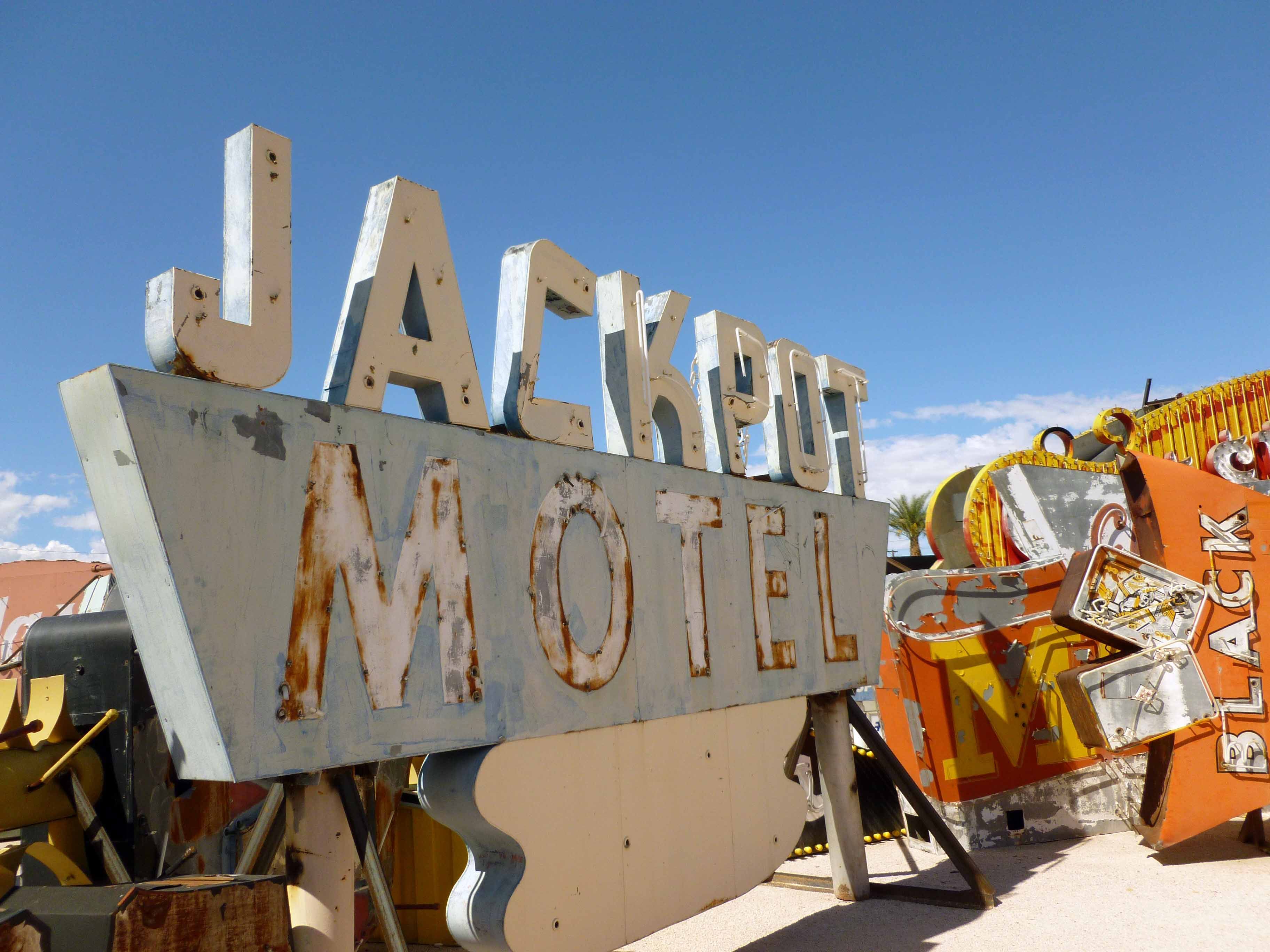
Looking for old neon signs? You just hit the jackpot. (Photo: Avoiding Regret)
As the saying goes, nothing gold can stay, and this even true of the glittering lights of Las Vegas’ inescapable decorative signage. When large signs are take down they are often carted off the to the city’s Neon Boneyard to rust away in the company of their strange, colorful brethren. Hundreds of signs covered in vintage bulbs or shaped-neon are stacked countless deep, creating strange valleys of deceased advertising. A number of famous signs such as the original sign for the Stardust Hotel can be found in the steel cemetery, but most are just the final reminders of businesses that no longer exist. Sin City has led many people to an early grave, but none of them looked as cool as this one.
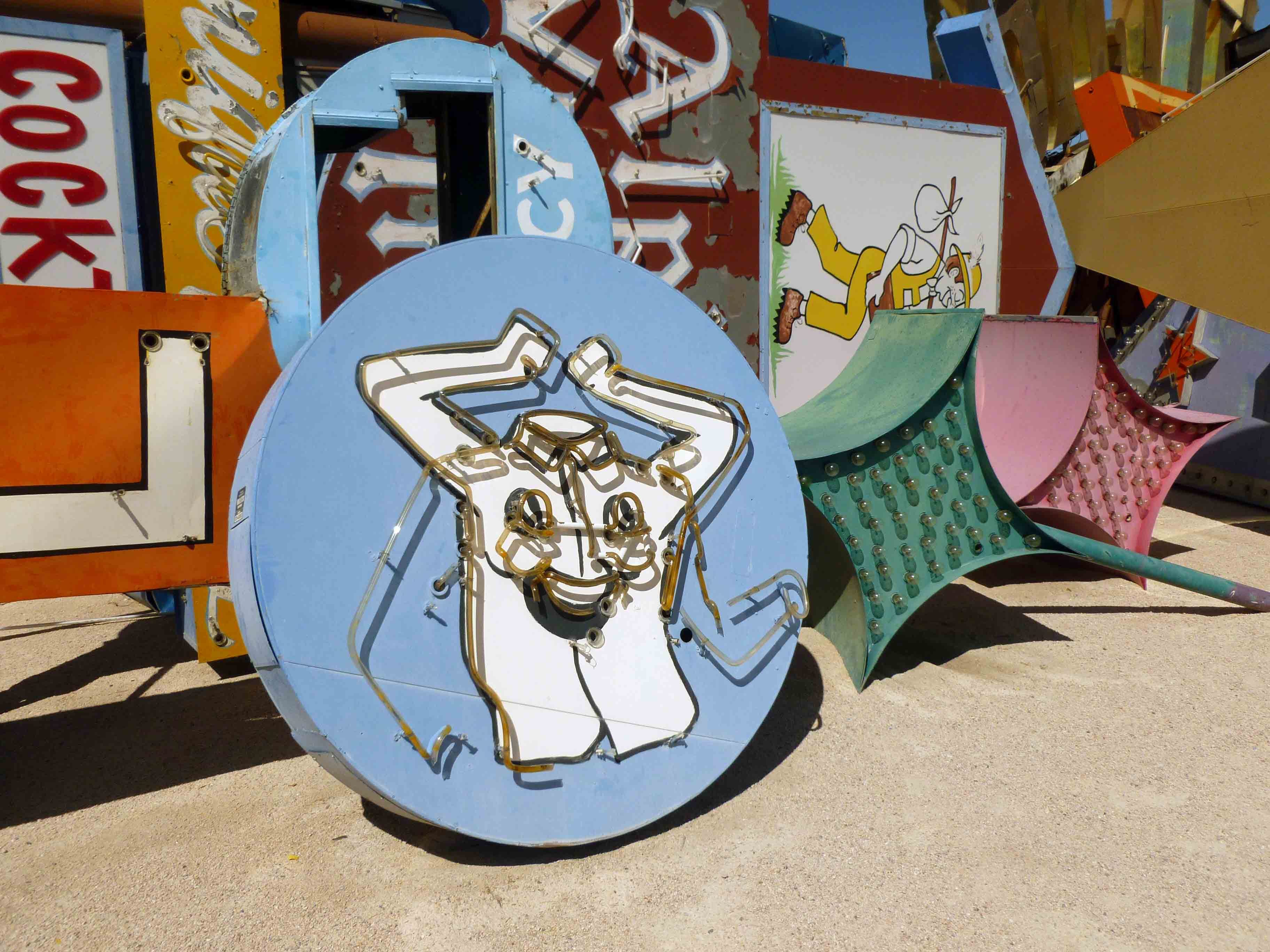
That shirt is having a great day. (Photo: Avoiding Regret)

This sign just collects regular dust now. (Photo: Avoiding Regret)
8. SPACECRAFT CEMETERY
Pacific Ocean, New Zealand

This graveyard is a bit hard to visit. (Image: Google Maps)
Unfortunately there are no pictures of the spot known as the Spacecraft Cemetery, but that is because it is at the bottom of the Pacific Ocean. Even spaceships need to die, and when they do, they have to be buried somewhere where their exotic technologies and materials don’t fall into the hands of rival countries or worse. So rather than just leaving them in orbit like so much space junk, many larger craft are commanded to fire themselves to the bottom of the ocean just off the coast of New Zealand. Decommissioned satellites, containers of astronaut poop, and even the entirety of the Mir space station can be found lurking in the depths of the cemetery, waiting to be discovered by some far future grave-robbers like so much pirate’s treasure.

One day the International Space Station will be at the bottom of the ocean. (Photo: NASA)
Visit the FAST Fiberglass Mold Graveyard on Obscura Day 2015, May 30th!
















Follow us on Twitter to get the latest on the world's hidden wonders.
Like us on Facebook to get the latest on the world's hidden wonders.
Follow us on Twitter Like us on Facebook